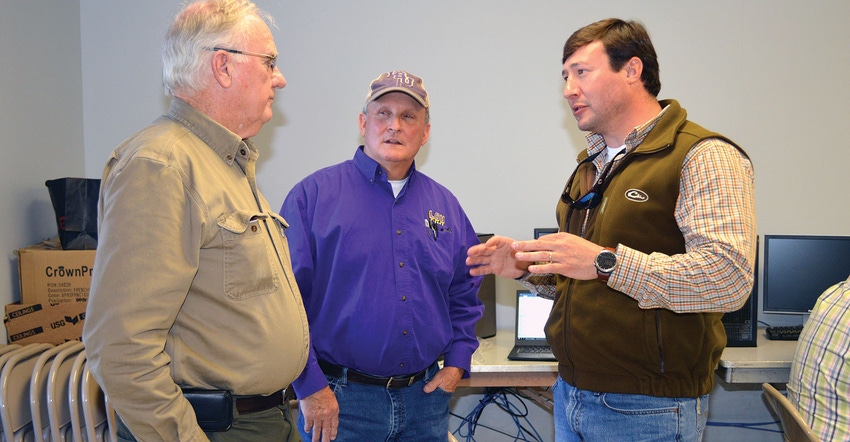February 26, 2019

For cattle producers, benefits of using winter cover crops include additional forage for cattle, improved soil properties and winter weed suppression, LSU AgCenter weed scientist Josh Copes said at a seminar on Feb. 13 in Oak Grove, La.
At an event sponsored by Cattle Producers of Louisiana and Louisiana Grazing Lands Conservative Initiative, farmers and ranchers took advantage of the chance to discuss issues about integrating cover-crop systems into their operations.
Dave Foster, Cattle Producers of Louisiana chief executive officer, said the meeting offered producers a chance to identify farmers, ranchers and educators who are working in cover crop systems as contacts who can answer questions and provide assistance.
“We have to figure out how in agriculture to work together and complement each other,” Foster said, adding that the mission of CPL is to bring people together, identify needs in the cattle business, challenge each other to explore options and discover new solutions.
Copes said preliminary data show that timing of cover crop termination in a row crop system had minimal impact on final crop stand, plant height and yields and significantly reduced annual winter weed pressure.
“Most cover crops are winter annuals. After the flowering period, they’re pretty much done,” he said. Seed selection is important because termination for some cover crops is more difficult and could be a concern for cattle producers who want to allow the emergence of perennial grasses for summer grazing.
Livestock grazing
AgCenter forage specialist Wink Alison said cover crops in row crop systems could supply forage for livestock grazing and provide opportunities for farmers and ranchers to develop working partnerships.
James Hendrix, AgCenter conservation agronomist, said no two farming operations are alike, and management for cover crops is site-specific.
“Everybody has these issues — erosion, weeds, fertility, compaction, water management, insects and diseases,” he said, adding that cover crop planning and management depend on the intended result for a specific site.
Most producers who use cover crops may focus on soil quality and soil health, thinking the terms are synonymous, Hendrix said.
“I look at soil health and soil quality as two different things,” he said.
Soil quality deals with how the soil performs for the intended result, such as increasing yield and profit in the farming operation, while soil health is how the soil performs in its role in the ecosystem. “If you are raising cattle, you want that soil to perform by raising food for those animals,” Hendrix said.
Start with manageable acreage
To successfully integrate a cover crop system in any farming operation, start with a manageable acreage and look at the species that can accomplish your objectives. “Buying cover crop seed is just like buying crop seed,” Hendrix said.
Seeds used in cover crops should be adaptive to the cash crop, soil type and tillage system, germinate fast to provide competition with emerging weeds and be easily terminated, he said.
East Carroll Parish farmer Robbie Howard has used cover crops in his farming operation for 18 years. “I can be in the field sometimes three to four days before my neighbor because my water is going down, and it isn’t going into the ditch,” he said.
Cooper Hurst, rancher and owner of Hunt Hill Cattle Company in Woodville, Miss., said he was motivated to make management changes in his operation by simple economics.
“We are substituting changes in management for highly expensive inputs, and that is so much more fun. It’s liberating,” he said.
Hurst operates a sustainable, regenerative multi-paddock grazing system, or mob-grazing system. He said two things that influenced him were the Natural Resources Conservation Service rainfall simulator and the aggregate stability test, or slake test.
“If you don’t have living roots, you won’t have microbes as active in the soil,” Hurst said.
Water-holding capacity
NRCS soil scientist Rachel Evans said water-holding capacity is tremendously improved in cover crop systems.
Evans and NRCS water quality specialist Steve Nipper used the rainfall simulator to demonstrate results of rainfall on soil profiles from land that has been farmed using cover-crop systems versus conventional-till operations.
“It all goes back to pore space and how much organic matter is present, and how many living roots there are helping to create and preserve that pore space,” Evans said.
“Keep a cover on the soil surface year-round, and think about what you want that cover crop to do,” Nipper said.
About the Author(s)
You May Also Like




